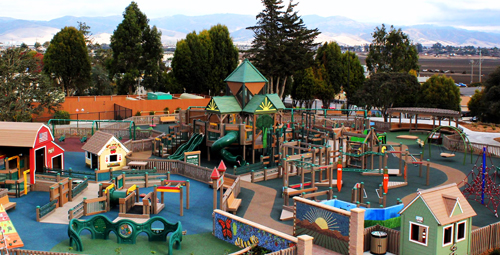
This blog post is part two of a series about facilitating inclusion for people with disabilities in parks and recreation. In part one, we provided an overview of inclusion and explored why it matters in parks and recreation. Today we will be exploring how to facilitate inclusion at an organizational level by including self-advocates, creating an accessible environment, and implementing organizational and programmatic changes.
Include Self Advocates in Program Planning, Implementation and Evaluation
To create meaningful and lasting change when it comes to including people with disabilities, it is important to involve people with disabilities in program planning, implementation and evaluation. Consider creating an advisory committee if you do not have one. If you do have one, ensure there is representation from community members with disabilities and their family members. It is not sufficient only to have caregivers or parents providing insight. Their experience is valuable, but it does not replace the voices of those living with a disability. Also consider that there is significant diversity within the disability community, which means one experience does not represent the needs and perspectives of everyone.

Pictured: An image that represents neurodiversity, the concept that we all think differently and there is an endless range of ways people perceive and interact with the world. Graphic courtesy of Adobe Stock.
Another way to gather information from people with disabilities to better support them is to use evaluation. A needs assessment or other form of evaluation can bring valuable insight. Some methods for collecting these perspectives are surveys, focus groups, community conversations, and interviews.
Create an Accessible Environment
Access does not necessarily mean inclusion, but for inclusion to take place, access must exist. Accessibility means individuals are able to approach, enter and use a space. The Americans with Disabilities Act (ADA) of 1990 provides accessibility standards for public facilities. These standards should serve as a baseline; however, to create inclusive environments, additional support and considerations are often required. For example, the ADA may provide standards for individuals to be able to access a playground and use a ramp to get on the equipment, but it does not require that an individual be able to use a swing or slide.

Pictured: This photo shows a park at Tatum’s Garden in Salinas, California, that incorporates accessible and inclusive equipment and features to ensure all members of the community can participate. Photo courtesy of special-education-degree.net.
Implement Organizational and Programmatic Changes
Organizations can change policies and procedures to become more inclusive. For example, organizations can create an inclusive mission and vision statement or modify an existing one to ensure it demonstrates a commitment to diversity and inclusion. Organizations providing programming in the community should articulate that the program is available for people of all abilities in the mission statement and any marketing materials. Below is a list of other policies and procedures that are important to have in place for facilitating inclusion:
- Designated point of contact for inclusion issues
- Policies for emergencies and evacuation
- Accessible registration for programs, services, and membership (if applicable)
- Flexible fees for aides to provide support
- Rules on personal care attendants/aides
- Dietary accommodations (if applicable)
- Policy on service animals
- Policy outlining the use of accessibility equipment (including wheelchairs and mobility devices)
For any written policies and procedures, you can increase access by considering the following:
- Using plain language
- Creating a version with images for visual learners
- Offering versions for the blind
- Translating materials into languages appropriate for your community
Now that you have read parts one and two, take a walk around a local establishment (maybe a grocery store, park, library, or recreation center) and consider the elements that may not be accessible or inclusive to individuals with disabilities. From an accessibility perspective, would you be able to approach, enter and use the space if you used a walker, wheelchair or other mobility device? What about if you had a visual impairment or intellectual disability? Now take it a step further, as you’re navigating the environment, what barriers might there be to inclusion for all? Does the environment feel welcoming or inviting to people with disabilities?
As you begin to think about environments and spaces with both an accessibility and inclusion lens, you will notice many barriers in our built environments. Awareness is the first step, then you can begin to consider how these barriers might be addressed.
Stay tuned for part three of the series, “Implementing Supports to Facilitate Inclusion.”
Portions of this content reflect an inclusion curriculum developed at the University of Rochester Strong Center for Developmental Disabilities.
To learn more about how you can support inclusion in parks and recreation, visit NRPA’s Parks for Inclusion resource page.
Jennifer Ward (she/her) is an evaluation manager at NRPA.

